Cultural heritage sites in Dayton were the focus of a visit by Chinese officials from a world-class museum at a spectacular archaeological reserve and mausoleum of China’s first emperor.
The visit by Vice Curator Wang Mingsheng and Chief Chemist Rong Bo of the Museum of Terracotta Soldiers and Horses of Shi-Huang-Di will be highlighted when the two make a public presentation at Wright State University on Tues., Aug. 13. The presentation will be made in 135 Oelman Hall between 1:30 and 3 p.m.
On Aug. 12, the duo visited the Dayton Art Institute, where they saw the museum’s Asian collection. They were also scheduled to visit the Boonshoft Museum of Discovery and the National Museum of the United States Air Force, stops that could also potentially result in official relationships with the Chinese museum, which is near Xi’an, China.
The visit is part of a new partnership initiative between the museum and Wright State.
“It’s a big deal,” said Stephen Foster, Wright State’s associate vice president for international affairs. “It really opens up a lot of possibilities for us.”
The museum is part of an archaeological site and mausoleum in which thousands of terracotta soldiers and other figures depicting the armies of China’s first emperor, Qin Shi Huang, were unearthed. It is believed to be one of the most important findings of the 20th century.
The funerary art was buried with the emperor in 210 to 209 B.C. to protect him in the afterlife and was discovered by some farmers in 1974. The mausoleum is a World Heritage Site, listed by the United Nations, Educational, Scientific and Cultural Organization as of special cultural and/or physical significance. Last year it attracted 5 million visitors.
The museum’s labs are working to restore and preserve the terracotta figures, which are made of a clay-based ceramic.
Under the agreement, Wright State experts would go to the site to conduct research aimed at expanding the excavation and better protecting and displaying the mausoleum. The university would accept students from the museum seeking to learn more about conservation, historic preservation and exhibition preparation.
Wright State is the only U.S. university to have such a partnership with the museum, which has similar agreements with the Ludwig-Maximilian University of Munich, Germany; Oxford University and University of London, England; and the University of British Columbia, Canada.
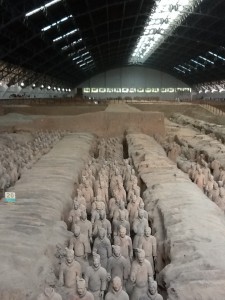
The Terracotta Warriors Museum near Xi’an, a collection of terracotta sculptures depicting the armies of Qin Shi Huang, the first Emperor of China dating from 3rd century B.C. will now be available to Wright State faculty and students to study because of a new agreement.
“We want to introduce the museum officials to Wright State University and to Dayton, show them primarily what the university has to offer in terms of partnership, exchanges, technical and research exchanges and assistance,” Foster said. “And we want to explore more specific ways in which we can begin to do exchanges, research collaborations.”
In the public presentation at Wright State, the Chinese officials will outline the history of the museum, show what relics have been uncovered, detail their research, and explain the excavation and preservation process. Members of the community are invited and encouraged to come.
The Chinese experts also plan to tap into the expertise at Wright State while they are here.
The College of Science and Mathematics has geophysics experts who can discuss new ground-sensing techniques that could aid in excavating the relics without damaging them. And Yi Li, dean of the college, said the Chinese officials are bringing samples they want the college’s experts on surface and composite chemistry to analyze.
Most of the soldiers that were excavated had colors, but the colors can fade quickly when exposed to the air. Humidity levels must be kept high enough to help preserve the color, but low enough so as not to spur the growth of mold.
Wright State’s College of Liberal Arts can offer experts in archaeology, art history and public history, a program that trains archivists to maintain archives and work at museums.
“I think the exchanges will be both at the university level and what I’m really hoping for is also at the community level,” Foster said. “This has huge potential.”
- Rong Bo working with the massive inventory listing at the Terra Cotta Warrior Museum
- Bo shares his thoughts and findings regarding the Terra Cotta Warrior collection.
- Terra Cotta Warrior Museum Vice Curator Wang Mingsheng
- Rong Bo examines an artifact.
- Terra Cotta Warrior Museum Chief Chemist Rong Bo (left) and another in the field.




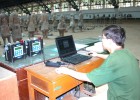
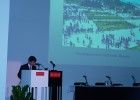
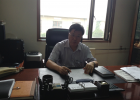
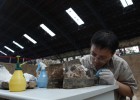
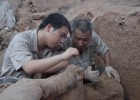
 Difficult conversations
Difficult conversations  Celebrated Wright State alum serving his community as surgeon
Celebrated Wright State alum serving his community as surgeon  Wright State University Foundation awards Students First Fund grants
Wright State University Foundation awards Students First Fund grants  Cosmic collection
Cosmic collection  Wright State revives student-faculty collaborative writing journal
Wright State revives student-faculty collaborative writing journal 